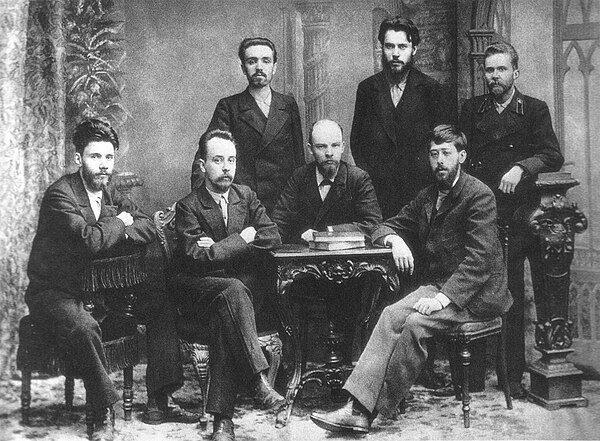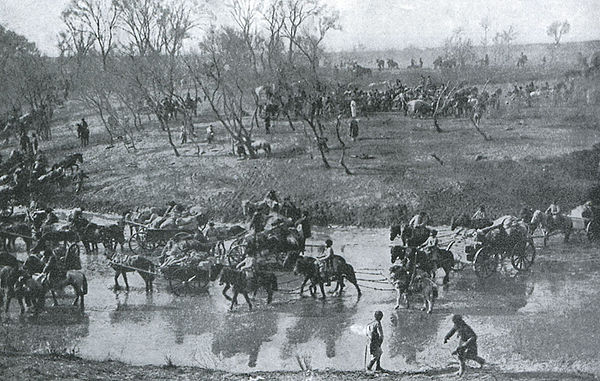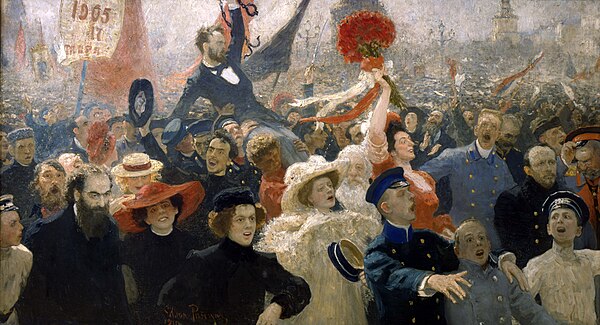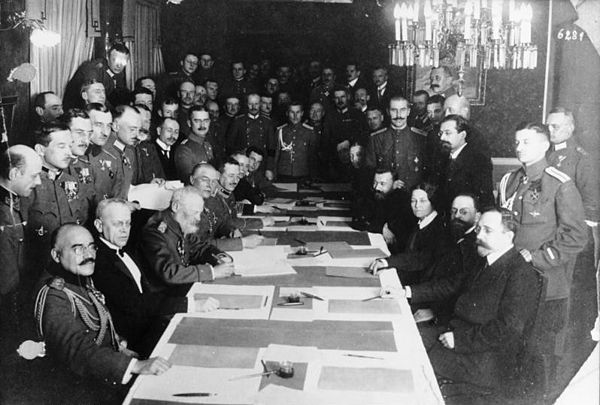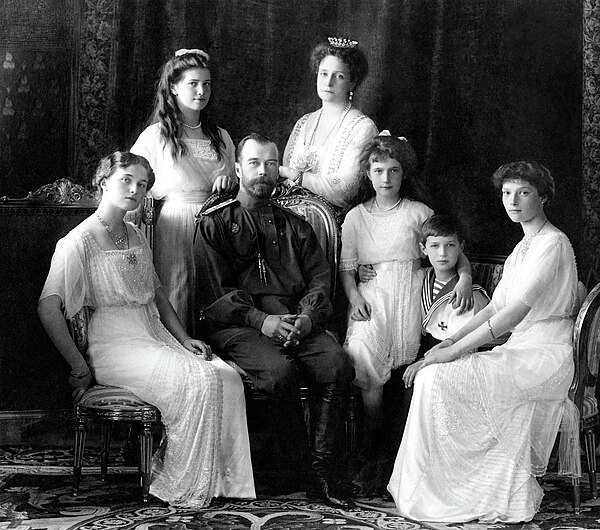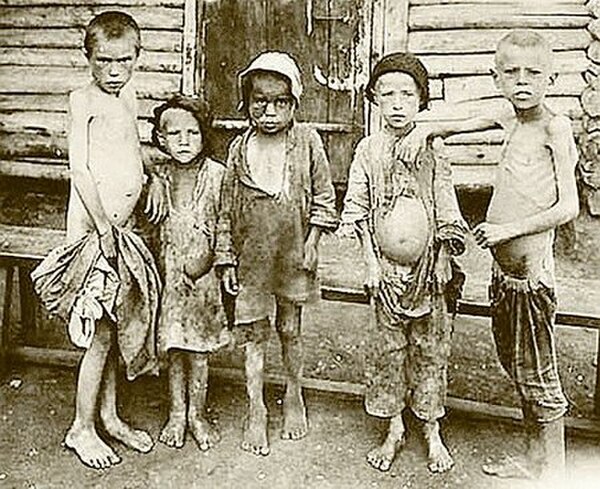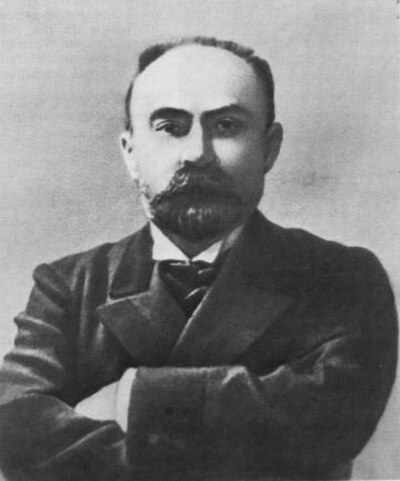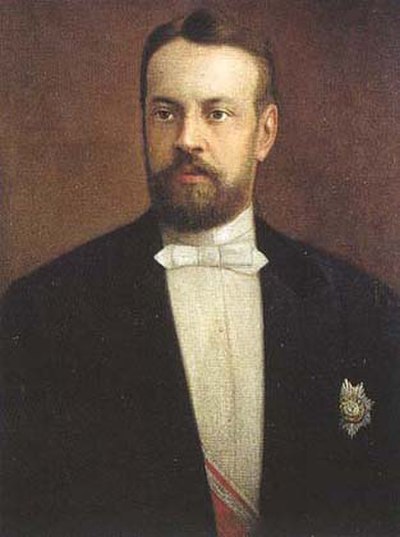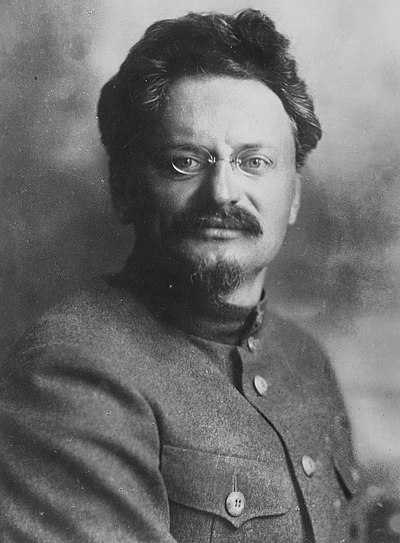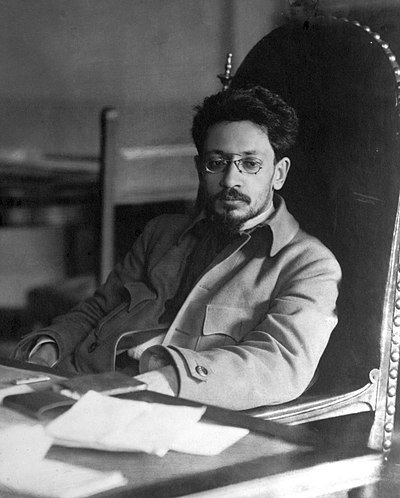
Russian Revolution
The Russian Revolution was a period of political and social revolution that took place in the former Russian Empire which began during the First World War. This period saw Russia abolish its monarchy and adopt a socialist form of government following two successive revolutions and a bloody civil war. The Russian Revolution can also be seen as the precursor for the other European revolutions that occurred during or in the aftermath of WWI, such as the German Revolution of 1918.
The volatile situation in Russia reached its climax with the October Revolution, which was a Bolshevik armed insurrection by workers and soldiers in Petrograd that successfully overthrew the Provisional Government, transferring all its authority to the Bolsheviks. Under pressure from German military offensives, the Bolsheviks soon relocated the national capital to Moscow. The Bolsheviks which by now had secured a strong base of support within the Soviets and, as the supreme governing party, established their own government, the Russian Soviet Federative Socialist Republic (RSFSR). The RSFSR began the process of reorganizing the former empire into the world's first socialist state, to practice soviet democracy on a national and international scale. Their promise to end Russia's participation in the First World War was fulfilled when the Bolshevik leaders signed the Treaty of Brest-Litovsk with Germany in March 1918. To further secure the new state, the Bolsheviks established the Cheka, a secret police that functioned as a revolutionary security service to weed out, execute, or punish those considered to be "enemies of the people" in campaigns called the red terror, consciously modeled on those of the French Revolution.
Although the Bolsheviks held large support in urban areas, they had many enemies both foreign and domestic that refused to recognize their government. As a result, Russia erupted into a bloody civil war, which pitted the "Reds" (Bolsheviks), against the enemies of the Bolshevik regime collectively called the White Army. The White Army consisted of: independence movements, monarchists, liberals, and anti-Bolshevik socialist parties. In response, Leon Trotsky began ordering workers' militias loyal to the Bolsheviks to begin merging and formed the Red Army.
As the war progressed, the RSFSR began establishing Soviet power in the newly independent republics that seceded from the Russian Empire. The RSFSR initially focused its efforts on the newly independent republics of Armenia, Azerbaijan, Belarus, Georgia, and Ukraine. Wartime cohesion and intervention from foreign powers prompted the RSFSR to begin unifying these nations under one flag and created the Union of Soviet Socialist Republics (USSR). Historians generally consider the end of the revolutionary period to be in 1923 when the Russian Civil War concluded with the defeat of the White Army and all rival socialist factions. The victorious Bolshevik Party reconstituted itself into the Communist Party of the Soviet Union and would remain in power for over six decades.


